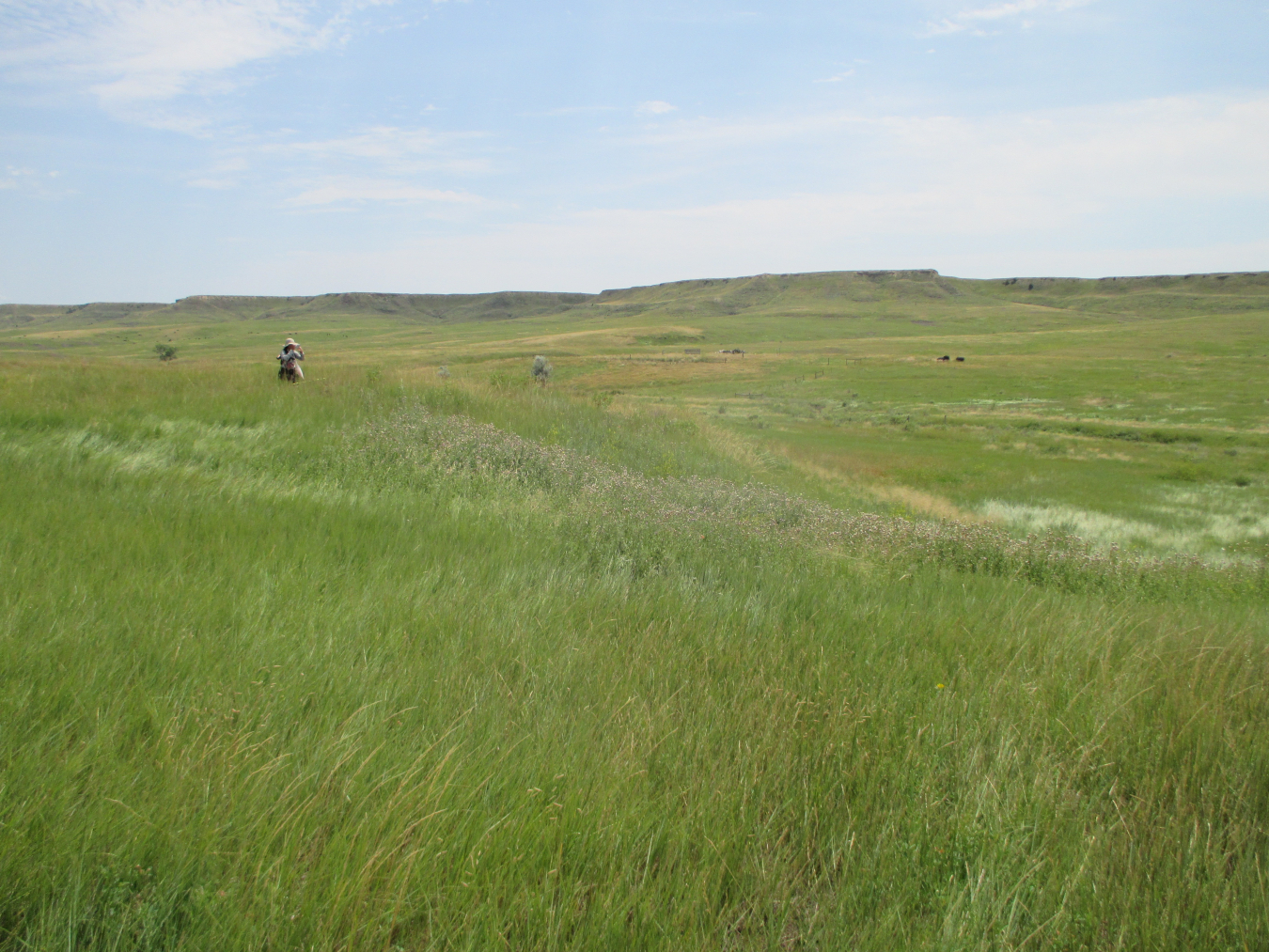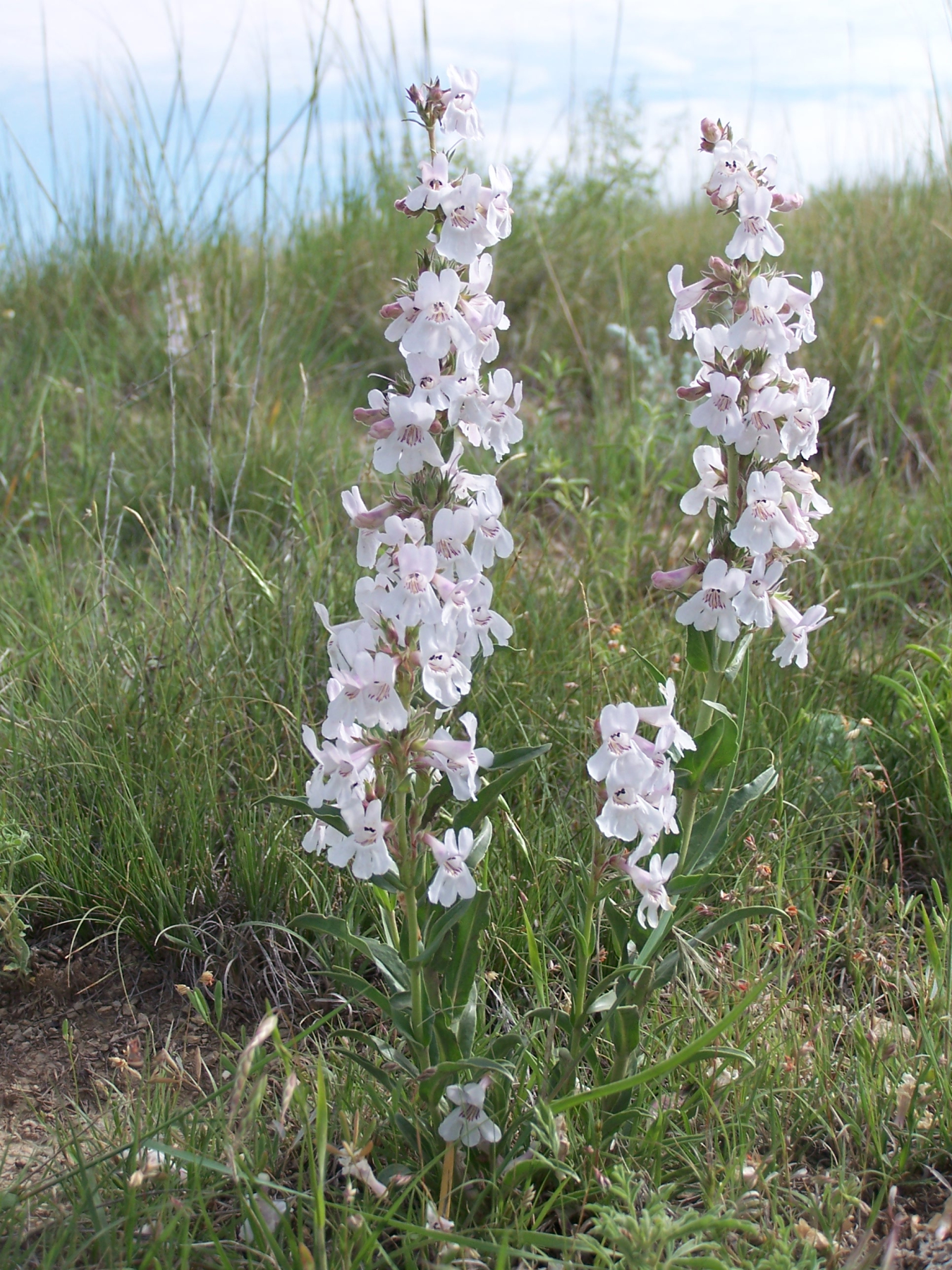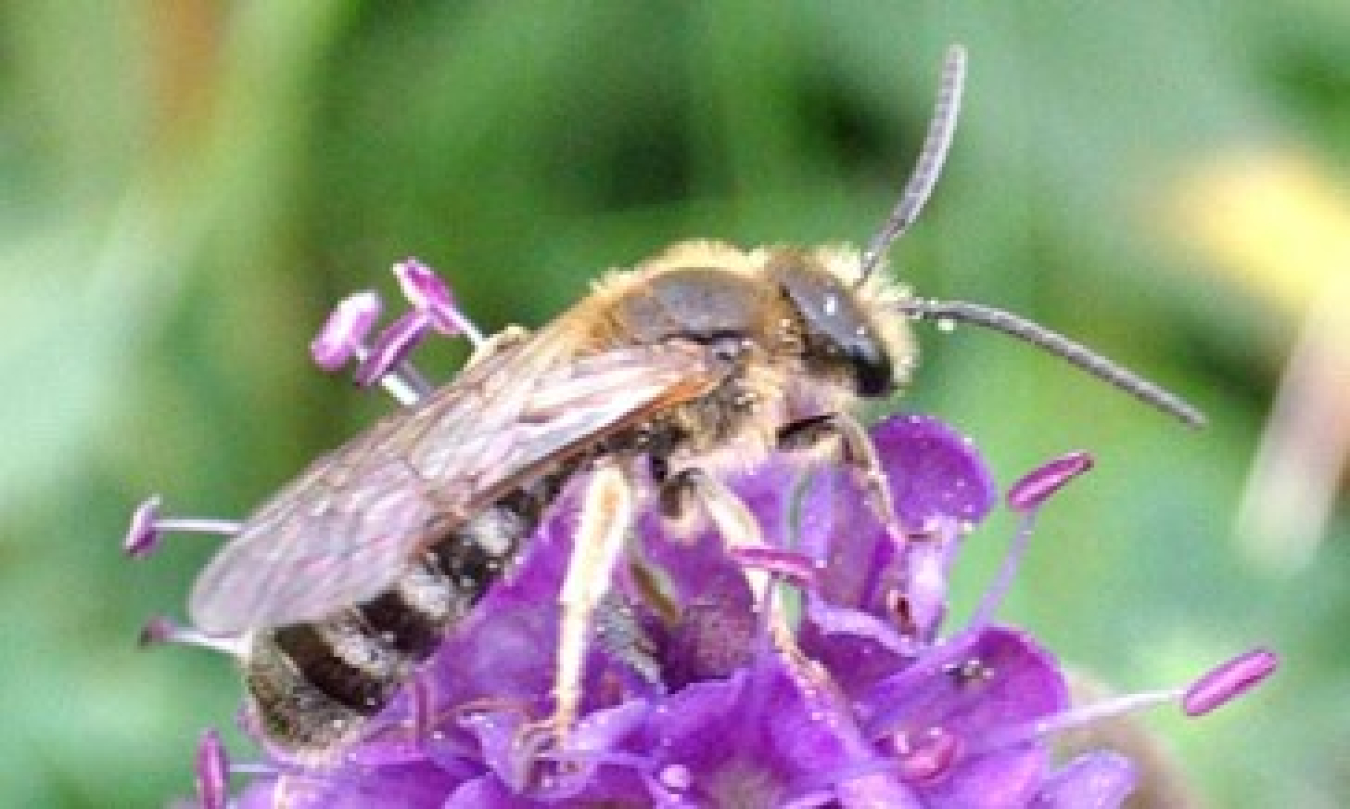Seeds that the LM team sowed after a wildfire at the Edgemont site in South Dakota have sprouted into pollinator-attracting wildflowers.
June 5, 2020
LM Edgemont Site Manager Tashina Jasso photographs wildflowers growing at the Edgemont site.
As a gentle breeze rustles the grass, a perky black-eyed Susan stretches toward the sun, hoping to attract the attention of industrious bees in search of pollen. Growing near a Uranium Mill Tailings Radiation Control Act (UMTRCA) disposal cell, the very presence of this small wildflower is a testament to the care the U.S. Department of Energy (DOE) Office of Legacy Management (LM) provides at managed sites across the country.
The 360-acre Edgemont, South Dakota, Disposal Site, located in the southwestern corner of the state, contains a disposal cell spanning about 100 acres and enclosing about 4 million tons of contaminated material from a former uranium processing mill. The surface of the cell is covered primarily with seeded grasses while the remainder of the site consists of a mix of reclaimed and undisturbed areas covered with native shrubs, grasses, and forbs. This landscape blends in with the surrounding private land, which is primarily used for grazing and wildlife habitat. A local ranching family grazes its cattle on the site through an LM grazing license. This licensee also provides monitoring for site security and maintains the perimeter fence.

Penstemon bloom at the Edgemont site.
In July 2016, a wildfire burned across the Edgemont site. Firefighters established containment boundaries by bulldozing through part of the site boundary. Subsequent site investigations by LM determined that the wildfire was not only ecologically beneficial, but also provided a stewardship opportunity for LM.
The temporary removal of competing groundcover after a wildfire allows wildflowers and beneficial plant species to establish in places where non-native or invasive species may have thrived. The wildflowers in turn help restore the habitat to a pre-fire condition, which is often healthier than before the fire.
In 2014, a presidential memorandum titled Creating a Federal Strategy to Promote the Health of Honey Bees and Other Pollinators was issued, directing DOE and other federal agencies to take actions consistent with each agency’s mission to support pollinator health on federal lands. DOE responded with the Pollinator Protection Plan, and set to work improving habitat, encouraging beneficial pollinators, enhancing nutritional resources, and reducing exposure to pesticides. LM utilized the post-fire Edgemont site as a location for implementing the initiative and determined a best path forward for establishing beneficial habitat. Seed mixes aimed at promoting pollinators were delivered to Jerry Sterns, the site’s grazing licensee, who in turn volunteered to re-seed the site.

A sweat bee keeps busy.
In total, 50 acres of the Edgemont site were re-seeded with a pollinator mix that included black-eyed Susans, evening primrose, yellow coneflower, maximilian sunflower, nodding bur marigold, prairie spiderwort, purple prairie clover, and bee balm. These plants are important because they are preferred by native bumblebees, which favor large flowers, and sweat bees, which favor smaller flowers.
Readily available food sources are paramount to the success of bee colonies that forage from spring to late summer while preparing for overwintering. With access to preferable food sources, native pollinator species can thrive and help maintain diverse ecosystems, especially those dependent upon pollination by native bees.
The Edgemont site is an excellent example of how to sustainably manage and optimize land use — all thanks to the combined efforts of LM and the Edgemont grazing licensee.

